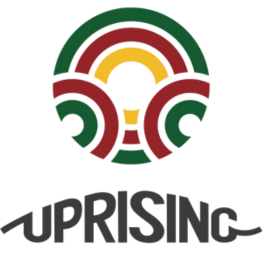
16 Apr Beyond fear, how to redefine risk and push your limits safely
We’re often told to face our fears and push our limits. But in reality, especially in high-performance sports like surfing or alpine skiing—fear isn’t just a mindset issue. It’s a physical, emotional, and psychological experience that can shape your trajectory.
At Uprising, redefining risk is central to our training approach. It’s not about ignoring fear or blindly charging into danger. It’s about understanding what fear is telling you, learning how to assess real vs perceived risk, and ultimately using fear as a tool to build resilience, precision, and self-mastery.
This is the difference between pushing recklessly and pushing with purpose, between burning out and rising stronger.
Fear isn’t the enemy—stagnation is
Fear is one of the most deeply human responses. It’s a built-in survival mechanism designed to protect us from harm. But while it’s helpful in avoiding real danger, it often also prevents us from experiencing growth.
In performance settings, fear can manifest as hesitation before a drop, doubt before a wave, or anxiety before a big decision. In life, it can also manifest as resistance to change or staying within comfort zones that feel safe but shrink our potential over time.
Most limits are internal. They are shaped by our past experiences, failures, and deeply ingrained stories about what we think we are capable of. These stories aren’t facts—they’re projections. And if left unchallenged, they quietly define our ceiling.
Our limits are often illusions projected by past experiences and fear of failure. When individuals realize this, a shift begins. They learn that fear doesn’t have to be a stop sign—it can be a signal that you’re approaching something meaningful.
Redefining risk and the art of calibration
There’s a romanticized narrative around going “all in,” pushing harder, risking everything for the thrill or breakthrough. But sustainable growth—especially in high-pressure or high-risk environments—requires something far more nuanced: calibration.
At Uprising, we teach athletes to find the “edge zone”—the space between safety and chaos where progress happens. Too little challenge and the brain disengages; too much and the nervous system floods, leading to panic, paralysis, or injury.
Real growth happens when you push just beyond what you thought was possible—not miles beyond. Sustainable performance depends on calibrating pressure, adapting in real time, and managing stress as a tool, not a threat.
Exposure, reflection and integration
Facing fear isn’t about overwhelming yourself. It’s about gradual exposure to controlled stressors, followed by intentional reflection and physical and emotional integration.
At Uprising, this method is woven into every experience—from surf sessions in Nazaré to altitude training in Les 3 Vallées. For example:
- A surfer might be tasked with paddling out in slightly larger conditions, not to catch the biggest wave, but simply to be present in the zone and practice breath control.
- A skier may be guided through progressively steeper or narrower terrain while focusing on precise edge control and breathing under pressure.
After each challenge, the athlete engages in recovery rituals—including breathwork, debriefs, and journaling—to process the stress and rewire the brain’s association with that environment. Over time, fear turns into familiarity, and familiarity becomes confidence.
This isn’t just physical training—it’s nervous system adaptation. It builds the ability to remain composed under stress and to step into progressively larger challenges with clarity and control.
Breaking through self-limiting beliefs
Fear and risk are often surface-level expressions of something deeper: belief systems. “I’m not strong enough.” “I’m not ready.” “I’ll mess this up.” These beliefs are often subconscious, and they form the invisible ceiling on performance.
The process of breaking these beliefs begins with awareness—identifying the source of hesitation—and then using real, physical experiences to challenge and replace the old narratives.
There’s a clear path to breaking through self-limiting beliefs: start small, confront discomfort often, and track every win, no matter how small. Risk becomes less about danger, and more about identity expansion—the decision to see yourself not as someone who backs down, but as someone who adapts, persists, and rises.
This transformation doesn’t require grand heroics. It requires consistency, presence, and deliberate exposure to small risks that prove the mind wrong, one step at a time.
Knowing when to push—and when to pull back
A common trap in performance culture is the idea that more is always better. But the truth is: growth is cyclical, not linear. There are times to push and times to recover. Knowing the difference is a core skill we teach at Uprising.
Knowing when to push and when to rest is the difference between breakthrough and burnout. Repeated exposure to overwhelming stress without recovery leads to injury, emotional fatigue, or shutdown.
Instead, we encourage a rhythm:
- Push days: intentionally operating at the edge.
- Integration days: skill work, mental processing, mobility.
- Recovery days: nervous system reset and reflection.
This rhythm improves performance and builds longevity, emotional stability, and a healthier relationship with challenge.
Fear as fuel
Fear doesn’t have to be a liability. When used correctly, it can enhance performance. It sharpens awareness, heightens focus, and motivates thorough preparation.
The goal is not to eliminate fear, but to change your relationship with it. At Uprising, we teach individuals to look at fear as a signpost pointing to the next threshold, not as a signal to retreat.
Pushing limits isn’t about proving something. It’s about discovering what’s possible—and that’s only available when you consistently face what scares you in a structured, supportive way.
Redefining risk isn’t about being fearless. It’s about being deeply aware, highly trained, and mentally equipped to face fear when it arises.
At Uprising, we train individuals to step into discomfort with purpose, not recklessness, and to build the inner structure that enables bold action without breakdown.
The strongest individuals are not those who never hesitate but those who learn to meet hesitation with movement, manage risk with clarity, and grow through fear with intention.
That’s not motivation. That’s training. And it changes everything.





No Comments